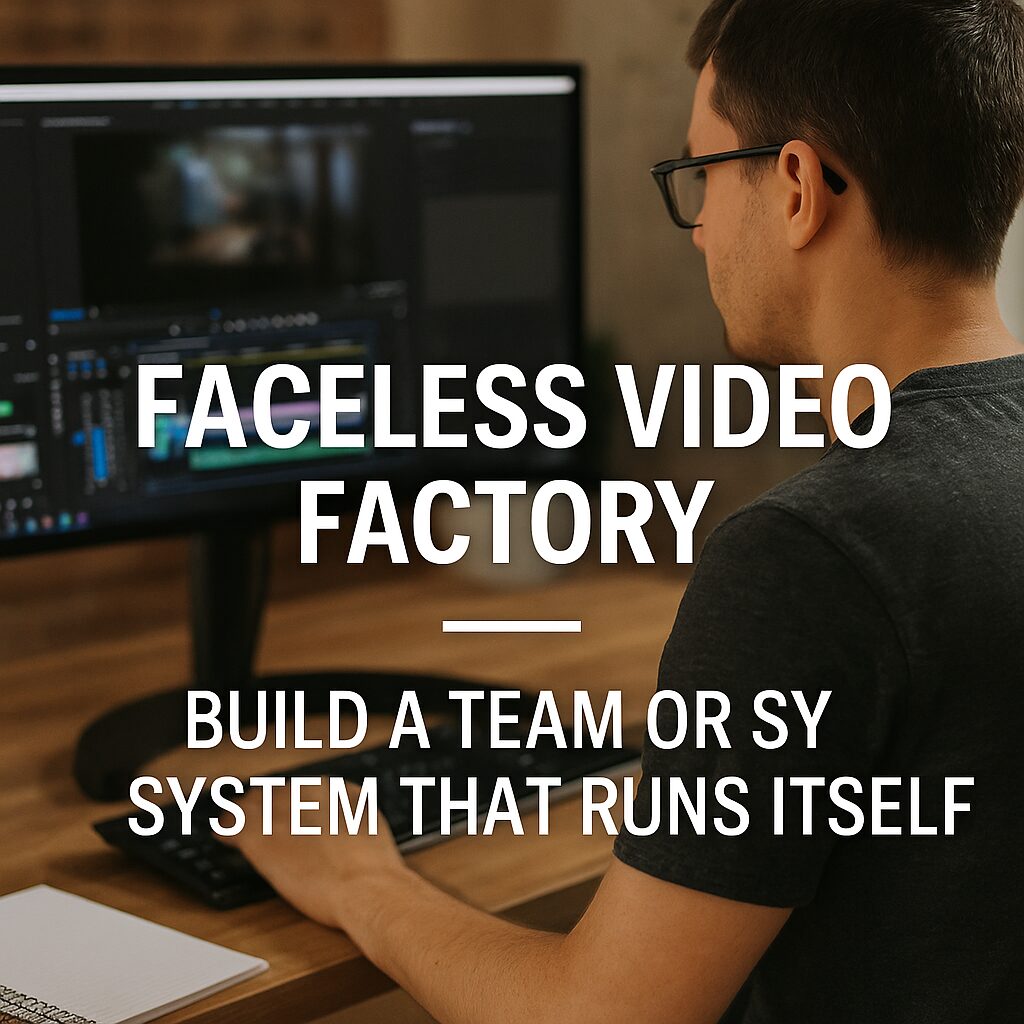In the beginning, you’re the entire production team: writer, voice artist, editor, uploader. But if you want to scale, you’ll eventually need a system—not just a schedule, but a machine that creates content for you.
Let’s dive into how to build your own faceless video factory—one that works even when you sleep.
1. Why Scaling Requires a System
Routines rely on your time. Systems multiply your time.
When you’re a solo creator, growth depends on your available hours. But when you build systems, you unlock scale. Systems are replicable. They make your output independent of your input.
The benefits of a system:
- Daily consistency without burnout
- Predictable content pipeline
- Ability to delegate and remove bottlenecks
- More time for strategy, partnerships, and new income streams
2. SOPs: Your Factory Manual
Before you hire help, you need a manual. SOPs (Standard Operating Procedures) are step-by-step guides for each task in your workflow.
Here’s how to break it down:
- Scriptwriting SOP
- Where to find topics
- How to structure intros, hooks, and CTAs
- Style and tone examples
- Voiceover SOP
- Which AI tools to use (e.g., ElevenLabs)
- How to export and clean audio
- Ideal pacing and emotion tips
- Editing SOP
- Templates to use
- Editing style (fast cuts, text overlays)
- B-roll sources and usage rules
- Thumbnail SOP
- Font and color rules
- Layout template
- Canva settings or Photoshop PSD
- Upload/SEO SOP
- Best title/description format
- Tag strategy
- Playlist and scheduling flow
Use Notion, Trello, or Google Docs to organize everything. If possible, include screen recordings using tools like Loom.
3. Build a Minimum Viable Team (MVT)
You don’t need a big crew. Most 6-figure faceless channels run on 2–4 people max.
Suggested Roles:
- Virtual Assistant (VA) – organizes, uploads, manages SEO
- Editor – edits 5–10 videos per week
- Scriptwriter – writes 5 scripts per week
- Optional: Thumbnail designer
Where to hire:
- Fiverr – best for individual tasks (starting at $5–15)
- Upwork – part-time ongoing roles
- OnlineJobs.ph – affordable VAs from the Philippines
Start with freelancers. Only bring people in-house after proving ROI.
4. Automate What You Can Before You Outsource
Before hiring humans, use tools that don’t sleep.
Here are the most effective automations:
- ChatGPT + Claude – auto-script generation
- ElevenLabs + TTSMonster – human-like AI voiceovers
- Pictory + Runway ML – AI video generation
- CapCut – beginner-friendly editing
- Zapier – automate uploads, backups, email alerts
- Lumen5 / InVideo – video assembly with minimal manual work
Your goal is a system like this:
- 70% automation
- 30% human team (only where judgment or quality matters)
5. Create a Weekly Production Pipeline
Think of your faceless channel as a mini production company. Here’s a weekly structure example:
| Day | Task |
|---|---|
| Monday | Research 5 trending topics + outline |
| Tuesday | Generate 5 scripts + 2 voiceovers |
| Wednesday | Create 2–3 videos using templates |
| Thursday | Final edits, add subtitles, create 5 thumbnails |
| Friday | Upload, write SEO descriptions, schedule |
| Weekend | Analyze performance + iterate process |
This model helps you grow from 1 video a week to 10+ videos—without stress.
6. Train Your Team Like a Business
Treat your freelancers like team members, not just vendors.
Tips:
- Use Slack or Discord for team chats
- Use ClickUp or Trello for tasks and deadlines
- Give clear feedback on each task
- Promote autonomy, not micro-managing
The goal: They should know what to do, even if you’re offline.
7. Scale with Data
Once the system is running:
- Track KPIs: watch time, CTR, views per upload
- Use Google Analytics or TubeBuddy
- Measure your ROI per team member
📌 Every week, ask: “Can I replace myself more?”
8. Final Vision – A Self-Sustaining Content Machine
The dream isn’t to work harder. It’s to build a video factory that prints income automatically.
You:
Start it
Systemize it
Step back from it
This is how faceless creators go from $0 to $10,000/month and beyond.
Coming Up in Part 10
The Faceless Empire – Build Your $10,000/Month Passive Machine in 2025
→ We’ll show you how to turn your faceless content into a sustainable, scalable, and automated empire that pays you—even while you sleep.


